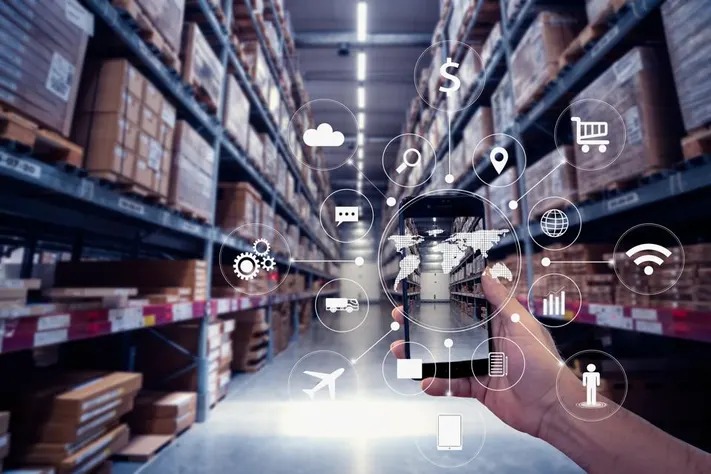Technologies against food waste: how we can save food and the planetBY ANTONIO PICASSO
- 23 April 2024
- Posted by: Competere
- Category: Senza categoria

Article published in Italian on Agenda Digitale
Advanced technologies play a crucial role in reducing food waste, a global issue that significantly contributes to CO2 emissions. Equally important is the role of industry, particularly the cold chain, in keeping food fresh and sustainable. Europe, with its packaging policies, is at a crossroads: here’s why.
How much can technology do to limit food waste and loss? A lot. This is the simple and indisputable answer that emerges when observing the tools that the industry provides to address a problem that is increasingly proving to be a global emergency. Consider that if CO2 emissions generated by the agri-food macro-sector range from 21% to 37% of the total, 8-10% of these can be attributed to unconsumed food. The fight against food waste has also been taken up by the United Nations, which has included it in its Sustainable Development Goals. According to Sdg 12.3, within six years, the phenomenon must be halved.
FOOD WASTE: THE RESPONSIBILITY OF PRODUCTION FORCES
In the past, this issue has been addressed by these same columns, focusing on the “consumer” part. This time, however, it is necessary to shed light on a blind spot of “wasted and discarded food”: the portion for which production forces are responsible. Agriculture, food processing industry, transportation industry, retail, but also the so-called HORECA sector (Hotellerie-Restaurant-Café) all have the opportunity to become more efficient in terms of food reaching the consumer in its best conditions, thus being consumed and, at the same time, virtuously responding to the European Union’s demands.
At the conference organized by Competere in February at the European Parliament, entitled “Technologies that can save the food chain (and the Planet) from waste”, it was Alexandra Nikolakopoulou, head of the Health and Food Safety Directorate (Dg Sante) of the European Commission, who emphasized that upstream stakeholders in the supply chain are required to make an effort, by 2030, to reduce food waste by 10%. Retail and citizens are assigned 30% each.
Specifically, agriculture must initiate new practices for efficient use of resources, both natural and energy. The full application of circular economy, as well as precision and regenerative agriculture, can make a difference.
REDUCTION OF FOOD WASTE: THE IMPORTANCE OF A SUSTAINABLE COLD CHAIN
However, in this collective effort, the key lies in the hands of the food preservation industry. Specifically, in the so-called cold chain. The cold chain encompasses all industrial entities involved in maintaining fresh and frozen products at a constant temperature throughout their lifecycle. It starts from the production facility and reaches the point of sale, through all transportation and storage moments. Maintaining a certain temperature level ensures food preservation, ensuring that it arrives intact at the consumer’s table.
During this process, thermal shocks must be avoided, as they could alter the organoleptic properties of the food. Interruption of the cold chain, on the contrary, could compromise the nutritional properties of the product, risking its integrity, hygienic standards, and food safety, practically turning it into waste.
If we focus on the fruit and vegetable sectors, for example, important components of a healthy European diet, losses close to 50% of total production are recorded. Having an efficient and sustainable cold chain is crucial in containing these figures. It is here that industries along the supply chain – from harvesting, transportation, to final distribution – must step up.
THE THERMO KING MODEL
Among the most sophisticated models of the cold chain, attention should be paid to the one applied by the US-based Thermo King, whose latest innovations are somewhat binary. On one hand, there are electrification and digital monitoring processes to maintain temperatures ranging from -70°C to +40°C on all transportation lines. Sensor technology and data analysis for air, sea, and road carriers demonstrate how artificial intelligence can take preventive action against food waste and non-consumption cases. On the other hand, there is the reduction of CO2 emissions in all processing phases: from introducing food into refrigeration units to delivery to retailers.
THE ENVIRONMENTAL IMPACT OF PRESERVATION PROCEDURES
In this regard, it is important to reflect on the fact that preservation procedures also have an impact on the environment. Heat and cold, so crucial to our daily lives, are the true culprits of anthropogenic climate change. It should be noted that approximately 15% of annual global greenhouse gas emissions are linked to heating and cooling of buildings and homes, while another 10% comes from food lost during transportation or never consumed. Refrigeration systems are sources of CO2 emissions. So are transportation means. This is why Trane, to meet the great challenge of reducing 1 gigaton of CO2 emitted by 2023 (Gigaton Challenge), has included a progressive conversion of energy sources in its production facilities and, even more, its entire fleet. Currently, there are about 40,000 electrified refrigeration units from the company on European roads.
However, despite the scale, the effort of a single entity may not be sufficient.
PACKAGING, EUROPE AT A CROSSROADS
The battle over packaging in Europe between recycling and reuse risks undermining the virtuous returns of these operations. The cold chain, in fact, works if it is supported by good packaging. Inert, ductile, and aseptic materials are needed. More simply, plastic packaging that is resistant to food deterioration is needed.
In this case, it is evident that reusable packaging may be impractical. The recently reached agreement for the new Packaging & Packaging Waste Regulation (PPWR) sets reduction targets for packaging (5% by 2030, 10% by 2035, and 15% by 2040) and requires EU countries to review, in particular, the amount of plastic packaging waste.
Europe is at a crossroads, therefore. If it wants its Green Deal to truly become its trademark, for quality products and ESG compliance, it must initiate an integrated industrial policy, in which none of the supply chains or production sectors overshadow the other. On the contrary, favoring one industry over a direct competitor means advocating a superficial sustainability policy that only benefits our competitors.
.

